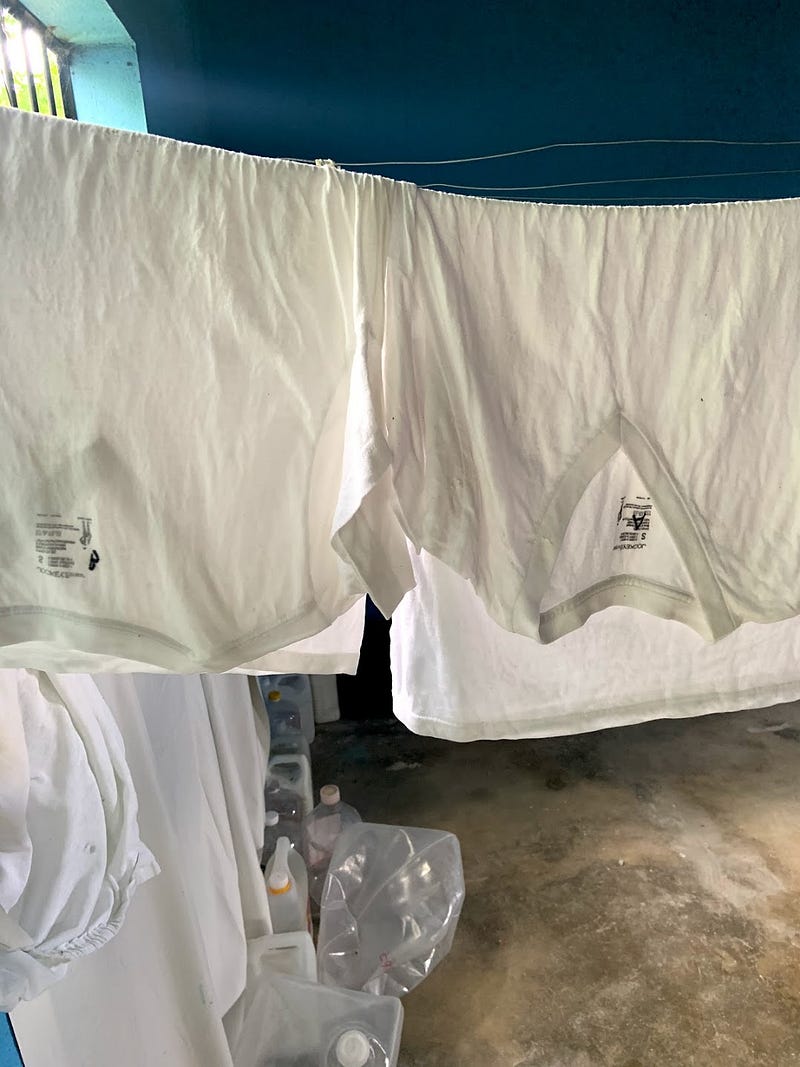Innovative Use of Salt Solutions to Combat Microbial Growth
Written on
Introduction to Salt Solutions and Microbial Inhibition
Recent scientific studies have demonstrated that applying salt onto hydrophobic filter materials can effectively suppress microbial growth across different surfaces. This article outlines an experiment designed to evaluate this hypothesis by treating various fabric types with salt-infused solutions to mitigate bacterial growth from simulated droplet infections. In a collaborative effort to contribute to the global fight against COVID-19, researchers Marcos Lopez, Corinna Nielson, and Roberto Baldizon joined forces with Hospital Privado de Peten in Guatemala, aiming to make a positive social impact on low-income communities worldwide.
Equipment Utilized in the Experiment
To conduct this study, the research team utilized the following materials:
- Cotton Towel
- Polyester Uniform
- Old Hospital Bed Sheet
- Old Hospital Curtain
- Kitchen Salt (NaCl)
- Hand Sanitizer (Soap)
- Coconut Oil
- Distilled Water & Tap Water
- Blood Agar/Mannitol Salt Agar
- Cotton T-Shirt
- Scissors, Markers, and other Office Supplies
- Scale, Incubator, Pipets, Electric Heating Plate, and other Lab Equipment
Experimental Procedure Overview
The experiment was structured into four distinct phases to streamline volunteer participation.
Phase One: Preparation and Planning
This phase involved gathering materials, planning the experiment, and coordinating the efforts of the team.
Phase Two: Creating Salt Solutions
This stage concentrated on preparing salt-based solutions and applying them to the samples.
Phase Three: Inoculation with E. coli
In this phase, the team prepared a McFarland Standard E. coli solution and inoculated selected samples for testing.
Phase Four: Drying and Data Collection
In the final phase, the samples were left to dry, and the results were documented.
Phase One Steps:
- Selection of samples:
- Cotton fabric: Old Bathroom Towel
- Polyester fabric: Old Sports Uniform
- Mixed Polyester/Cotton fabric 1: Old Hospital Bed Sheets
- Blended Polyester/Cotton fabric 2: Old Hospital Curtain
- Randomly cut 10 sections measuring 3 cm² from each sample.
- Gather kitchen salt, soap, and coconut oil (the latter being less commonly available).
- Verify availability of necessary materials and equipment in the lab.
- Coordinate with team members for the experiment.
- Choose clothing for treatment to be worn during testing (two cotton T-shirts).
Phase Two Steps:
- Formulate Salt + Distilled Water and Salt + Soap + Coconut Oil + Distilled Water Solutions:
- Mix 450 g of salt with 1.55 L of distilled water.
- Split the solution into two portions of 0.775 L, each containing approximately 225 g of salt.
- Heat and stir one solution until homogeneous, cool it, and label it as “Solution A.”
- For the second solution, remove 15 mL, add 7.75 mL of soap and coconut oil, heat until homogeneous, and label it as “Solution B.”
- Simulate real-world treatment by wetting each sample with 2175 µL of Solution A and Solution B.
- Leave control samples untreated.
- Dry all samples in an incubator at 37°C for 48 hours.
Phase Three Steps:
- Create a Standard McFarland E. coli Solution for inoculation.
- Spray each fabric to mimic respiratory droplet infection.
- Transfer the infected samples to agar plates for bacterial growth.
This video discusses the control of microbial growth and how various solutions can be effective in inhibiting bacteria.
Phase Four Steps:
- Examine samples for bacterial growth after incubation.
- Consult lab technicians to verify and document results.
- Wear treated T-shirts for a full day and record observations.
Results and Observations
The results from the treated samples were as follows:

Roberto documented his experience with the treated shirts:
- Shirt treated with Solution A:
- Felt rigid and shrank, but stretched when worn. Some salt particles came off. It was comfortable overall, though slightly itchy at times.
- Shirt treated with Solution B:
- More rigid than Solution A, with less shrinkage but also less stretching. Had a milder salty scent but felt itchier.
Discussion of Findings
The experiment confirmed expectations; salt treatment successfully inhibited bacterial growth on all but two samples. The two fabrics that exhibited bacterial growth likely resulted from procedural errors. It appeared that one of the curtain and bed sheet samples treated with Solution A received excessive McFarland Standard Solution, which led to treatment degradation and allowed for bacterial proliferation.

Conclusions and Future Implications
The results validate the project's potential to benefit developing regions. Many individuals could adopt a similar method for treating less frequently washed fabrics to suppress bacterial growth. While the process is effective and accessible, it is time-consuming. Therefore, it is not recommended for items regularly laundered, such as shirts, pants, bed linens, and towels.
We welcome any feedback or questions regarding this article. Thank you for your interest.
~Roberto Baldizon
This video explores disinfectants and antiseptics, detailing their roles in preventing microbial growth.